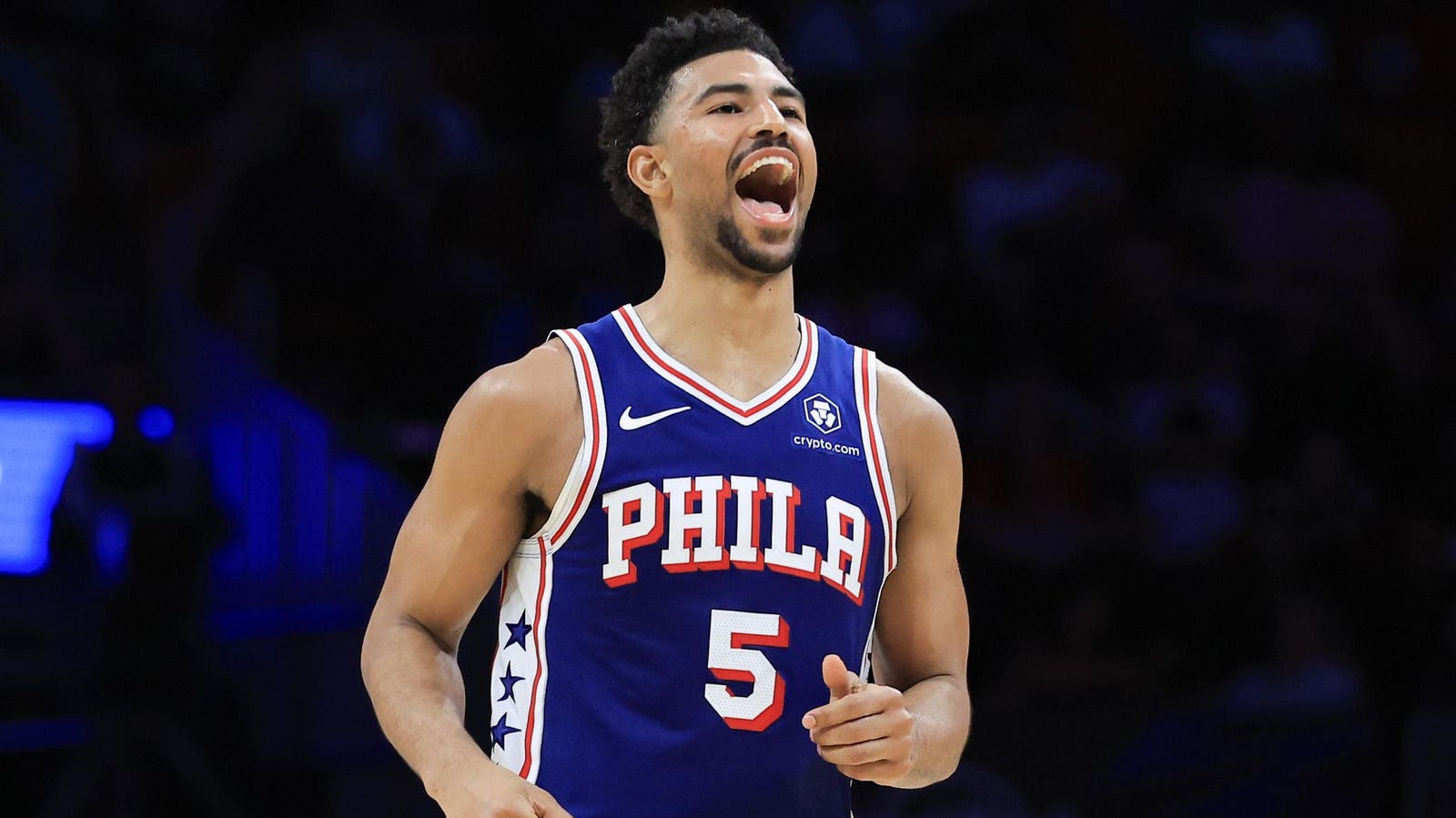MIAMI, FLORIDA – APRIL 07: Quentin Grimes #5 of the Philadelphia 76ers reacts during the second … More
The first and second aprons – introduced in the most recent version of the Collective Bargaining Agreement – have done a great job of maintaining parity and forcing teams to be smarter about the contracts they hand out.
However, for all that it has done to help the game, it has also had some unintended consequences, particularly toward restricted free agents.
The Tax Aprons Are Hurting Restricted Free Agents
While there is always still some value at this stage of the game, for the most part, you won’t find many heavy-hitters left two weeks into free agency. This go-around, though, four intriguing (albeit, flawed) young players, who already have productive seasons under their belt, are all still yet to be unsigned, and we haven’t heard much reporting about when this will change.
As you can probably infer from the headline, those four players are Josh Giddey, Quentin Grimes, Jonathan Kuminga, and Cam Thomas. All of those players are 25 years old or younger and have had at least one season where they finished with a positive Estimated Plus-Minus (EPM).
In a recent article looking at what Josh Giddey’s next contract should look like, we concluded that the soon-to-be fifth-year floor general should command an average annual value in the low 20s. Given that he’s the most accomplished of this quartet, Giddey should earn the highest AAV of the group, but they are still young/talented enough to be in the mid/high teens on a yearly basis.
However, it is not looking like any of them will get to maximize their earning potential this offseason, and the tax aprons are largely to blame.
The first and second aprons were included as part of the new CBA when the doctrine came into play in July of 2023. For those who aren’t completely familiar, the first and second aprons are salary thresholds that trigger additional restrictions on teams exceeding them, primarily to limit spending and promote competitive balance. It takes less to trigger the first apron penalties. As for the second apron, it takes more to trigger, but the punishments are far more severe.
The limitations in future flexibility that come with triggering one of these aprons have spooked a ton of teams, which limits the number of bidders in the auctions for these young players.
Remember, restricted free agents “can sign an offer sheet with any team, but the player’s original team can retain [them]
by matching the terms of that offer.”
For restricted free agents to really cash in during free agency, they need other suitors to offer them contracts in order to drive up the price their current employer needs to meet to retain them. Because of the aprons, there aren’t as many teams out there willing to really take those flyers. So, there is no one to drive the price up for them.
This trend benefits teams by enabling them to acquire players at a price below their fair market value, but it particularly harms former first-rounders with more polarizing skillsets.
How Restricted Free Agents Can Combat The Apron Dilemma
The best workaround for this quandary for guys like Giddey is to take their team’s qualifying offer, play the season out, and then become an unrestricted free agent next season.
Not only would becoming unrestricted free agents give these players more autonomy, it would also allow them to negotiate in a more buyer-friendly market – the projected cap rise should lead to more teams having cap space to throw around (although this recent report from Bobby Marks may throw a wrench in that possibility).
In Giddey’s case, this option gives him a great deal of leverage. The Chicago Bulls likely don’t want to let the player they traded their best asset for (Alex Caruso) fall into unrestricted free agency, where any team can vie for his services. Plus, Giddey probably won’t be too thrilled about returning to the team that was so stingy with him the season before.
Meanwhile, in the case of someone like Thomas, he doesn’t hold nearly the same level of bargaining power, as the Brooklyn Nets are loaded with backcourt players they are yearning to give opportunities to.
In any event, it seems unlikely that any of these four players will get paid the way they were hoping to this summer, and these recently invented tax aprons are the primary culprit.




